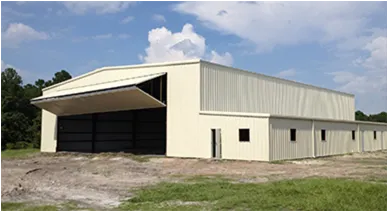- Afrikaans
- Albanian
- Amharic
- Arabic
- Armenian
- Azerbaijani
- Basque
- Belarusian
- Bengali
- Bosnian
- Bulgarian
- Catalan
- Cebuano
- Corsican
- Croatian
- Czech
- Danish
- Dutch
- English
- Esperanto
- Estonian
- Finnish
- French
- Frisian
- Galician
- Georgian
- German
- Greek
- Gujarati
- Haitian Creole
- hausa
- hawaiian
- Hebrew
- Hindi
- Miao
- Hungarian
- Icelandic
- igbo
- Indonesian
- irish
- Italian
- Japanese
- Javanese
- Kannada
- kazakh
- Khmer
- Rwandese
- Korean
- Kurdish
- Kyrgyz
- Lao
- Latin
- Latvian
- Lithuanian
- Luxembourgish
- Macedonian
- Malgashi
- Malay
- Malayalam
- Maltese
- Maori
- Marathi
- Mongolian
- Myanmar
- Nepali
- Norwegian
- Norwegian
- Occitan
- Pashto
- Persian
- Polish
- Portuguese
- Punjabi
- Romanian
- Russian
- Samoan
- Scottish Gaelic
- Serbian
- Sesotho
- Shona
- Sindhi
- Sinhala
- Slovak
- Slovenian
- Somali
- Spanish
- Sundanese
- Swahili
- Swedish
- Tagalog
- Tajik
- Tamil
- Tatar
- Telugu
- Thai
- Turkish
- Turkmen
- Ukrainian
- Urdu
- Uighur
- Uzbek
- Vietnamese
- Welsh
- Bantu
- Yiddish
- Yoruba
- Zulu
Nov . 15, 2024 22:58 Back to list
The Cost of Prefabricated Warehouses An In-depth Analysis
In recent years, the construction industry has seen a significant shift towards prefabricated buildings, and warehouses are no exception. As demand for storage spaces increases, many businesses are exploring the cost advantages of prefabricated warehouses. This construction method, which involves assembling components manufactured off-site, presents several financial benefits compared to traditional construction methods.
One of the primary cost advantages of prefabricated warehouses is reduced labor expenses. Since a substantial portion of the construction is completed in a controlled factory environment, the need for on-site labor is minimized. This approach enhances efficiency and reduces the likelihood of construction delays caused by weather conditions or other external factors. Consequently, businesses can save money not only on wages but also on the costs associated with project supervision.
Another financial benefit lies in the speed of construction. Traditional warehouses often take several months or even years to complete, depending on various factors such as design complexity and site conditions. In contrast, prefabricated warehouses can be constructed in a fraction of the time, sometimes within weeks. This expediency allows businesses to begin operations sooner, which can lead to increased revenue opportunities and a quicker return on investment.
cost of prefabricated warehouse

In addition to labor and time savings, prefabricated warehouses typically result in lower material costs. Because these buildings are produced in bulk, manufacturers can negotiate better pricing for raw materials. Additionally, because materials are sourced and used efficiently in a factory setting, there is less waste. By reducing unnecessary costs associated with excess materials, businesses can achieve more predictable budgeting and ultimately lower their overall expenditure.
However, it’s essential to consider the initial investment in prefabricated warehouses. While they often present lower overall costs, the upfront price can be higher than traditional construction methods. This is due to the investment in advanced manufacturing technologies and delivery logistics. Yet, many businesses view this as a worthwhile expense, considering the long-term savings and quicker occupancy timelines.
Moreover, prefabricated warehouses offer flexibility in design and expansion, which can significantly affect long-term operational costs. Businesses can easily modify or expand these structures as their needs change without incurring substantial additional expenses.
In conclusion, while the cost of prefabricated warehouses may initially seem higher, the long-term benefits are compelling. From reduced labor and material expenses to faster construction times and greater flexibility, businesses can find significant value in this innovative construction method. Ultimately, for many enterprises looking to optimize their operations, investing in a prefabricated warehouse is a smart financial decision that promises enhanced efficiency and cost savings.
-
How Do Prefabricated Steel Structures Transform Modern Construction?
NewsJul.14,2025
-
How Do Prefabricated Metal Buildings Redefine Modern Construction?
NewsJul.14,2025
-
How Do Prefab Insulated Metal Buildings and Steel Structures Revolutionize Modern Construction?
NewsJul.14,2025
-
How Do Pre - Engineered Steel Structures Redefine Modern Construction?
NewsJul.14,2025
-
Advancing Modular Construction with Prefabricated Metal Structures
NewsJul.14,2025
-
Advancing Industrial Infrastructure with Prefabricated Steel Solutions
NewsJul.14,2025
Products categories
Our Latest News
We have a professional design team and an excellent production and construction team.












